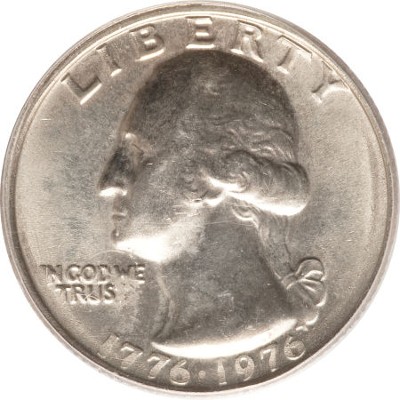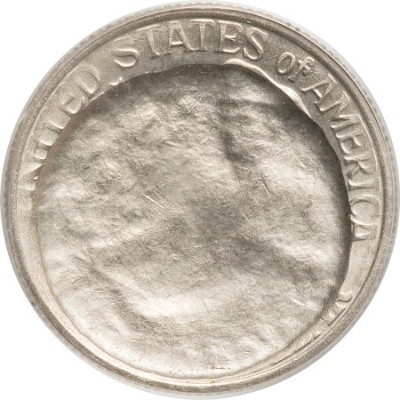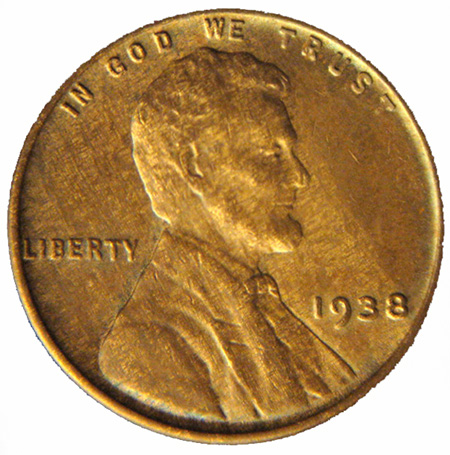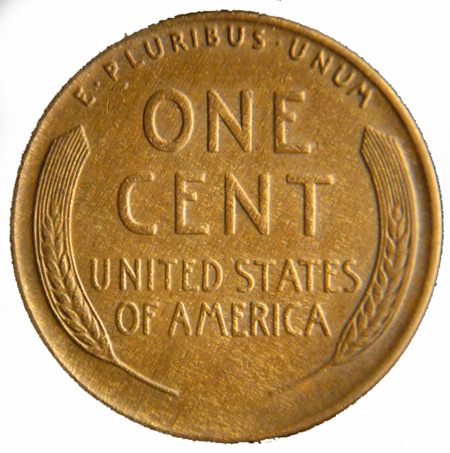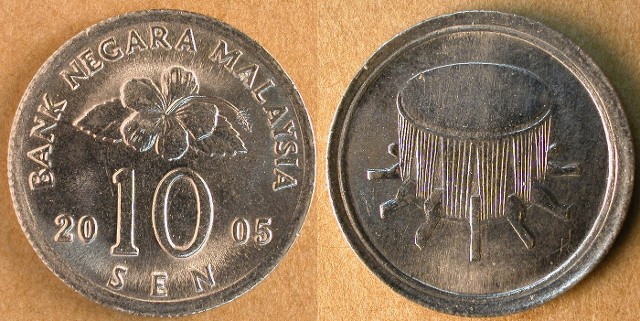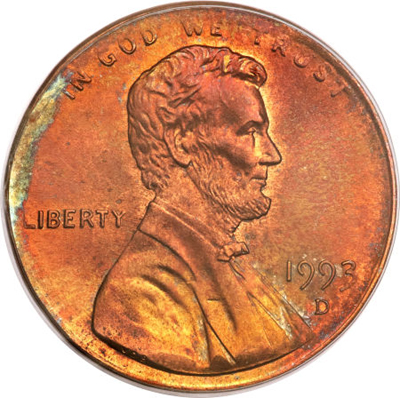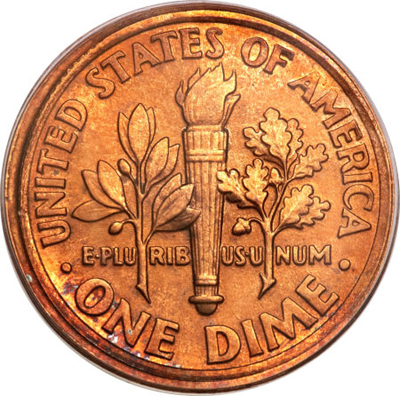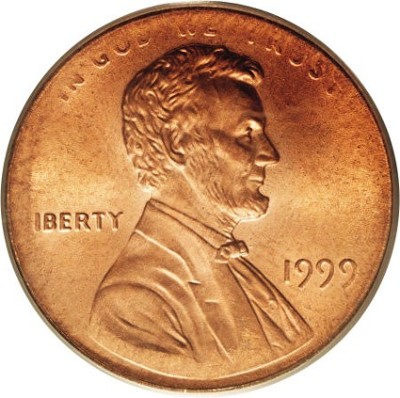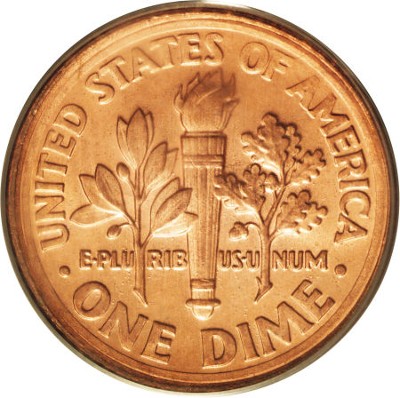PART VI. Striking Errors:
Struck Through Miscellaneous Foreign Matter:
Struck through an Emery Disc
Definition: During the striking process, a foreign object enters the striking chamber and is struck along with the planchet. If the foreign object is thin, the design will still transfer from the die to the planchet. However, there will be some distortion of the design elements varying on the thickness of the foreign object that is between the planchet and the striking die.
|
The 1986 Silver Eagle pictured below had its reverse struck through an emery disc. Click HERE to see struck-through object Images are courtesy of Heritage Auctions. |
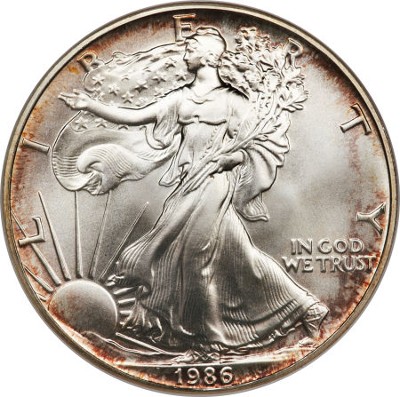 |
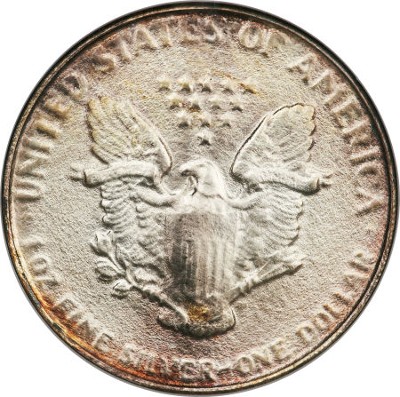 |
|
The 1986 Silver Eagle pictured below had its obverse struck through an emery disc. Click HERE to see the strike through object. Images are courtesy of Heritage Auctions. |
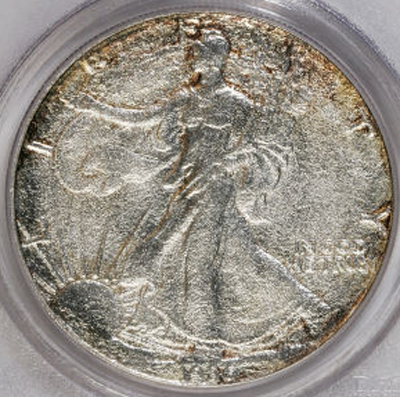 |
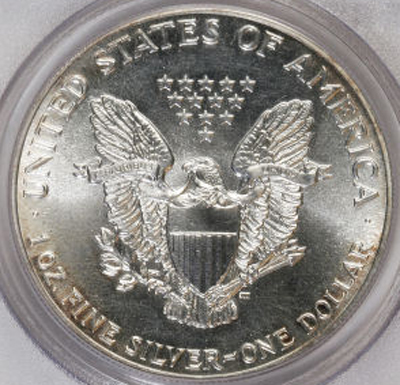 |
Saddle Strike Head To Head
PART VI. Striking Errors:
Saddle Strike:
Head-to-Head Orientation
Definition: A saddle strike is defined as planchet or coin that received two simultaneous strikes from two adjacent die pairs. Most saddle strikes show a head-to-head orientation of the two obverse designs.
The 1964(P) Lincoln cent pictured below failed to eject properly and ended up straddling two adjacent die pairs. It was then struck again. The tandem off-center strikes show the familiar head-to-head orientation.
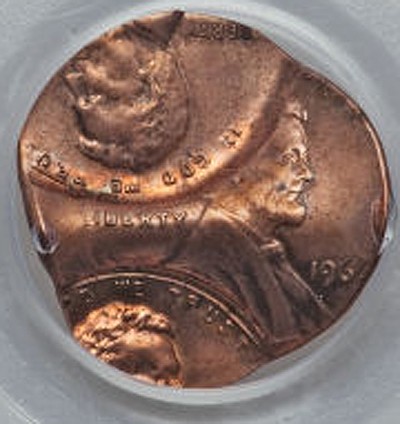
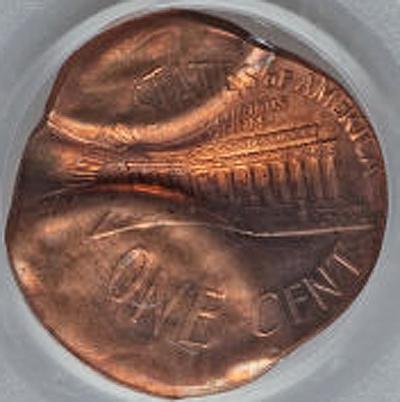
Images are courtesy of Heritage Auctions.
Split Planchet After Strike Wrong Denomination
PART VI. Planchet Errors:
Split Planchet:
After Strike:
Wrong Denominational Planchet / Off-metal:
Definition:A coin was struk on the wrong denominational planchet and split after the strike.
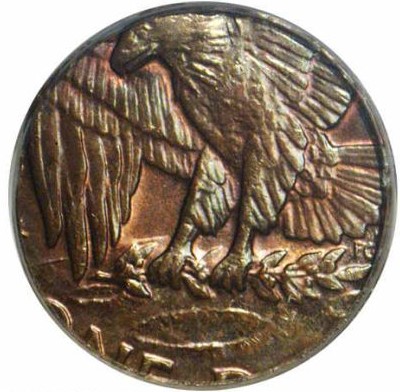 |
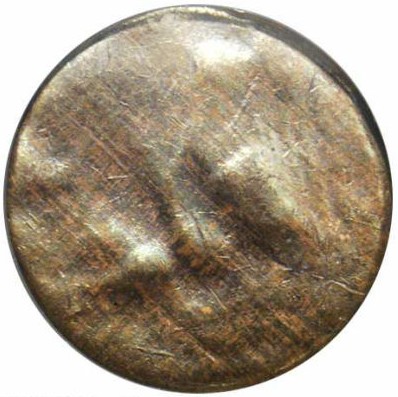 |
|
A cent planchet found its way between Eisenhower dollar dies and was struck. After the strike, the coin split in two along its edge. The half coin pictured above, shows a partial reverse design along with a uniface “obverse”. Images are courtesy of Heritage Auctions. |
Poorly Mixed Alloy
PART V. Planchet Errors:
Improper Alloy Mix:
Poorly Mixed Alloy
Definition:
|
|
|
The images above of a 1938(P) Lincoln cent show a poor mixture of the copper, tin, zinc alloy. The result is mottled bands of discoloration on both the obverse and reverse of the coin. This planchet anomaly is not that uncommon in the early Lincoln cent series and is referred to as “wood grain” texture or “woodies”. |
Mules Wrong Anvil Die 1993-D And 1999(P) Cent/Dime Mules
PART III. Die installation Errors:
Mules:
Wrong anvil die
Definition: Mules are coins struck by mismatched dies. In this case the wrong anvil die was installed in a coin press.
This Malaysian 10 sen mule was struck on a 10 sen planchet in a reeded 10 sen collar and carries a normal 10 sen obverse. The reverse face was struck by a 1 sen reverse (anvil) die.
This dual denomination mule was struck in 1993 by the Denver mint. It had the correct hammer die (cent die) and the coin was struck on the correct planchet. However, the anvil die (dime die) was mistakenly installed in the coin press which resulted in this unique combination.
Images courtesy of Heritage Auctions.
This dual denomination mule coin was struck in 1999 by the Philadelphia mint. It had the correct hammer die (cent die) and the coin was struck on the correct planchet. However, the anvil die (dime die) was mistakenly installed in the coin press which resulted in this unique combination.
Images courtesy of Heritage Auctions
Indents By Smaller Planchets
PART VI. Striking Errors:
Indents:
Indented by a smaller planchet
Definition: Two planchets, one larger than the other, are simultaneously fed between dies designed to strike the larger planchet. The smaller planchet rests between the obverse or the reverse die and the larger planchet. The smaller planchet is then struck into the larger planchet leaving a circular indentation (“indent”).
This 1998P Washington quarter was indented by a cent planchet.
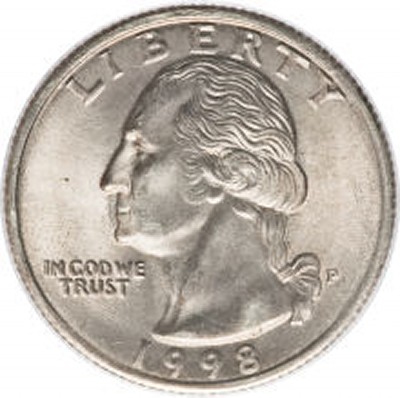
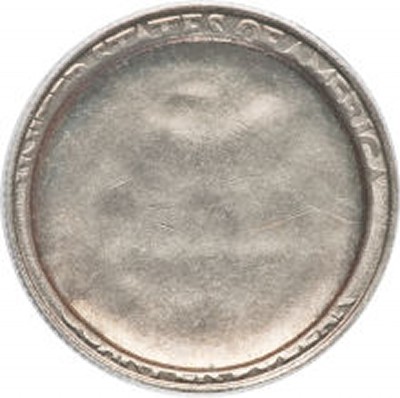
Images are courtesy of Heritage Auctions.
A similar incident occurred with this 1976 Bi-centennial quarter. This time it was a dime planchet that was injected into the striking chamber along with a quarter planchet.
